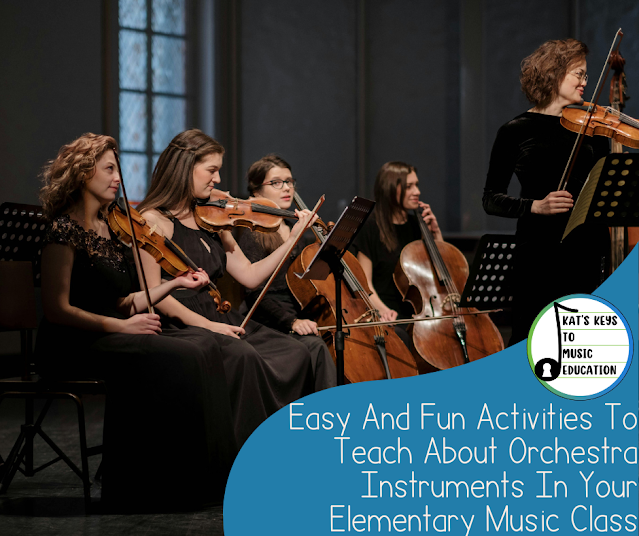Instruments of the orchestra is a subject that I love to teach because of the huge variety of games and fun activities you can do with it. It also makes the basis for some great sub plans for students to review what they know! Here are my favourite activities in a few different categories to learn or review instruments of the orchestra!
Videos
I use the Calgary Philharmonic’s Orchestra Adventure series of videos to teach instruments of the orchestra. These videos are great because they have each family in a separate video of 10 – 15 minutes long. I combine the video with an instrument labeling sheet (see the ones I use here), and then have students work on a word search or other worksheet for the rest of class while I help students check their answers. These videos can also make for great sub plans – I have a pre-made sub plan for the first video available on TPT here!
A video I love to leave as a sub plan is the New Jersey Symphony’s version of Young Person’s Guide to the Orchestra. This is a 22 minute long video, and you can easily whip up a worksheet to go along with it or leave some word searches or other busy work to make sure students have plenty to do for the entire class you’re gone.
Centers
Centers are a great way to review what students know and get them independently thinking about instruments of the orchestra. I have a bundle of my favourite review games on TPT – the I Spy games are so much fun for centers, especially if you’ve used the classroom instrument I Spy with your younger students so they’re familiar with the format already!
Review Activities
My favourite review activity is the Instruments of the Orchestra Escape Room I created for my students. You can create your own by combining some of your favourite center ideas together and making a simple answer sheet for them as well! Kids have so much fun they hardly realize they’re learning.
Instrument bingo is also a standard for a reason – it’s great to leave as a sub plan or as an easy day for yourself. My version on TPT includes a playlist with instrument sounds for easy playing, but there are many different versions out there that can work for you.
I hope this has left you with some new ideas to change up your teaching of instruments of the orchestra!



